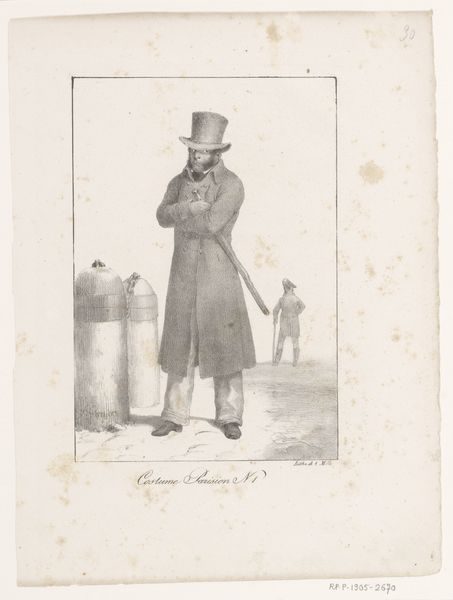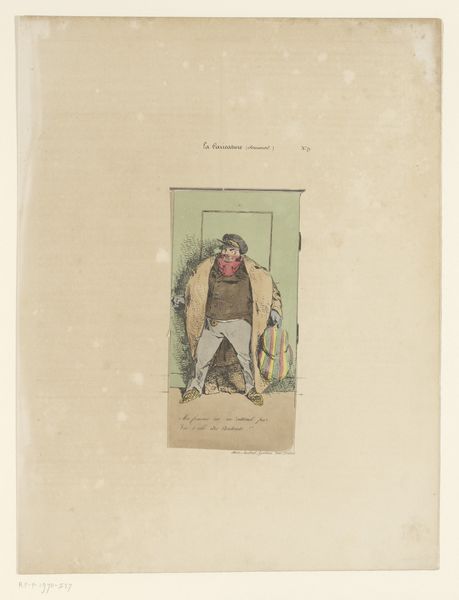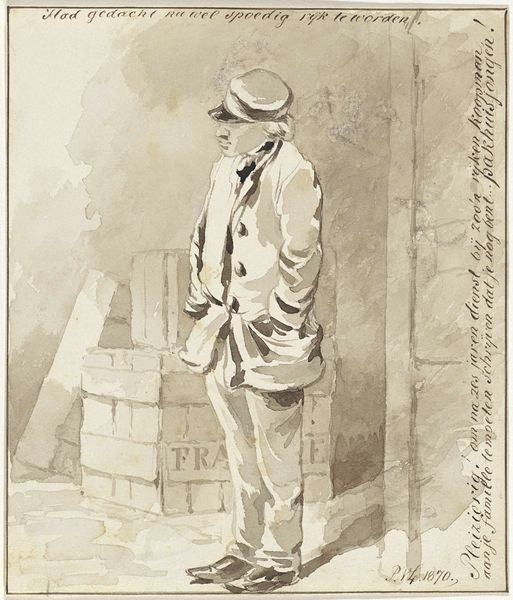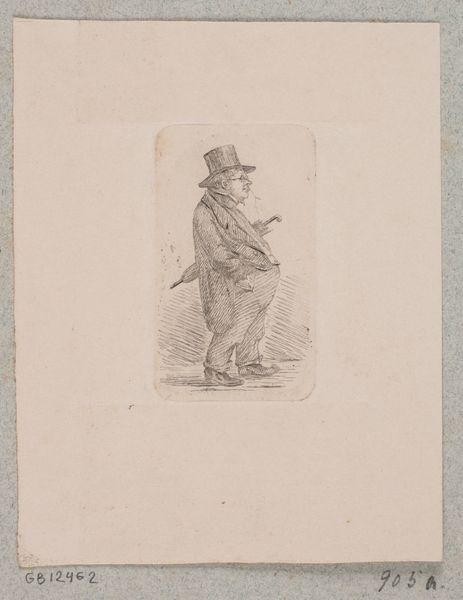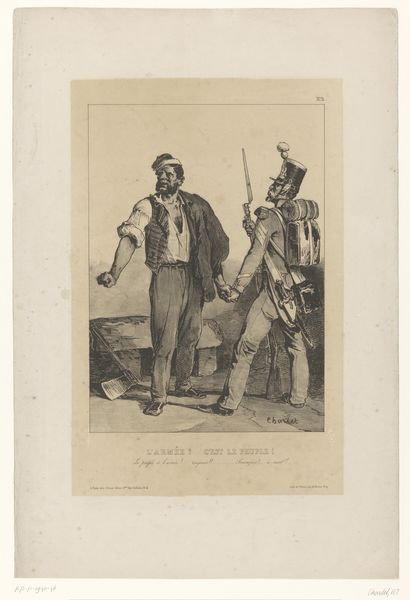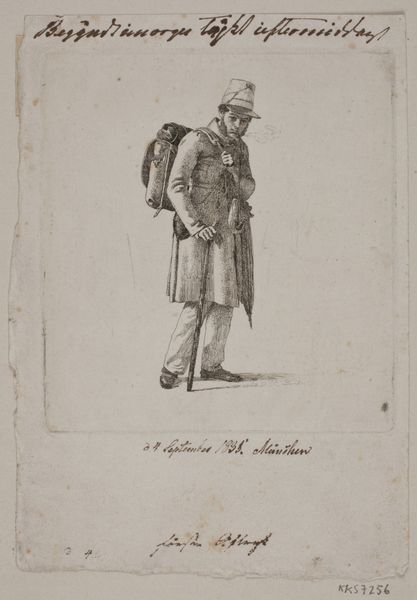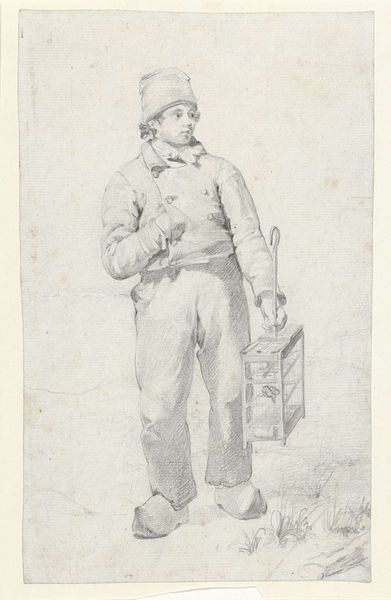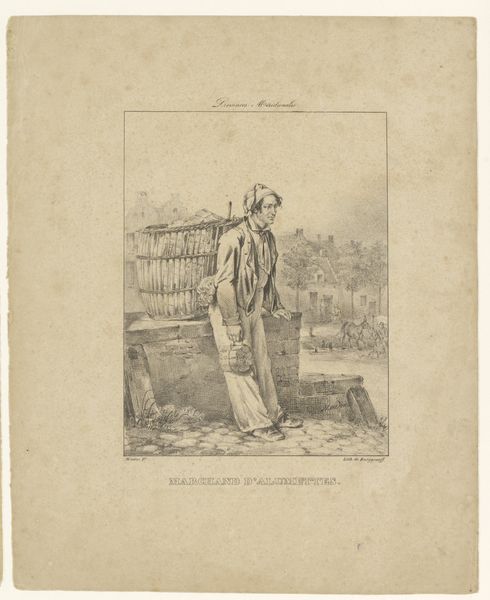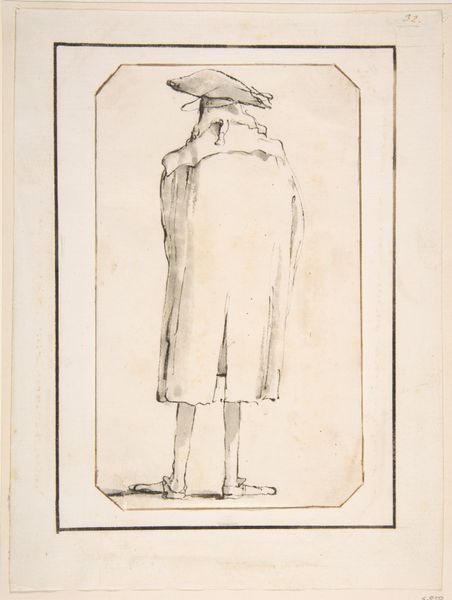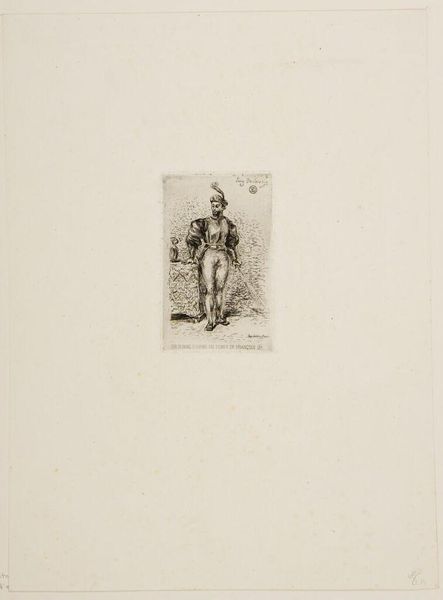
drawing, lithograph, print, pen
#
portrait
#
drawing
#
flâneur
#
lithograph
# print
#
caricature
#
romanticism
#
pen-ink sketch
#
pen
#
cityscape
#
genre-painting
Dimensions: height 272 mm, width 199 mm
Copyright: Rijks Museum: Open Domain
Curator: This pen and ink sketch, dating from 1820 to 1833, is titled "Twee mannen met reclameborden," or "Two Men with Advertising Boards," and is attributed to Charles Abraham Chasselat. Editor: Immediately, I'm struck by the figures' dejected postures; there’s a pervasive sense of weariness emanating from this scene. What's the story behind these forlorn fellows? Curator: Well, the men are sandwich board carriers, a common sight in cityscapes of the era. They represent the burgeoning culture of advertising and consumption. What interests me most is the raw, almost hasty, execution. The sketch betrays the social stratification; this work serves as material evidence of street-level commerce, using human bodies as tools for capitalist exchange. Editor: Absolutely. There’s an unmistakable socio-political commentary embedded here. Considering the time period, the rise of Romanticism, do you see a narrative unfolding about the common man's place within this evolving society? Curator: Precisely! The use of pen and ink allows for incredible detail on the signage itself, making us confront what these men are actually advertising and *for whom*. It is a city, but the men's material state doesn't look urbanized. It suggests the transition into market economies from old systems that is far from resolved, materially speaking. Editor: The institution displaying the piece is also relevant. Showcasing at the Rijksmuseum, the piece serves to question what becomes culturally significant to the Netherlands and other Western European areas. Curator: Good point. It brings up questions about labor. How were these posters fabricated? Who profited most? Whose labor and consumption were most prioritized and considered? Editor: It’s poignant to think of the societal shifts, as cities transform, while the work involved hasn't shifted away from a tedious kind of manual labour. Curator: It gives the whole image a rather melancholic resonance that I won't forget soon. Editor: Indeed, a testament to the enduring connection between art, society, and commerce through material objects.
Comments
No comments
Be the first to comment and join the conversation on the ultimate creative platform.
